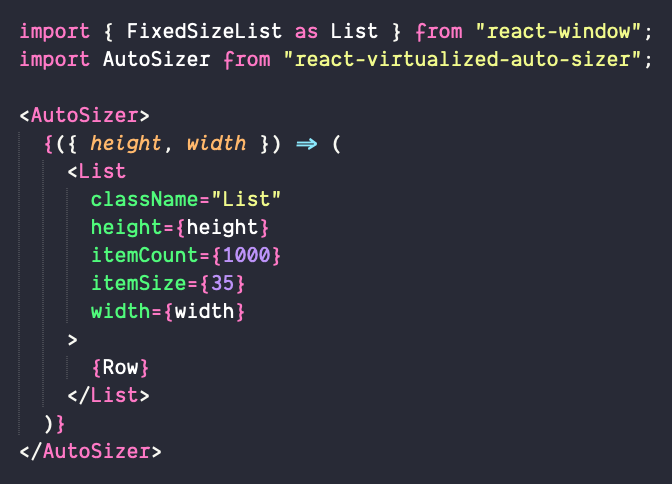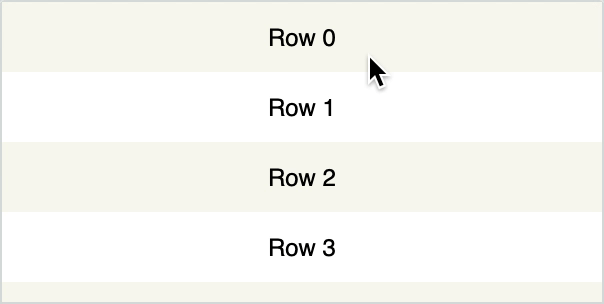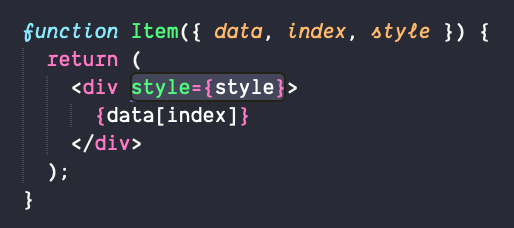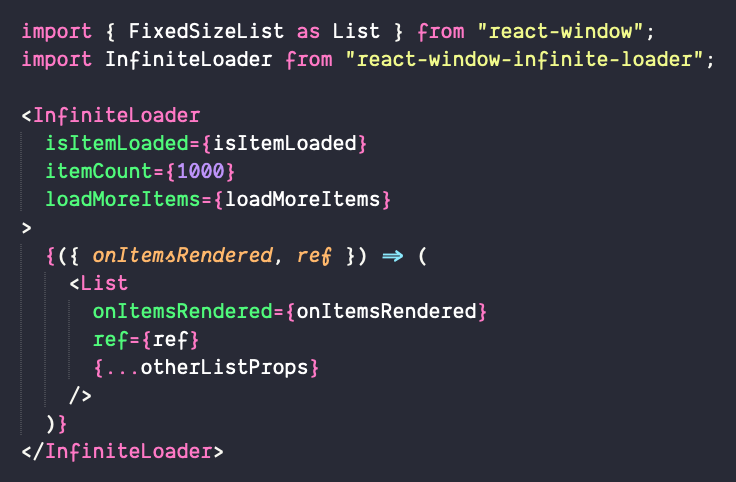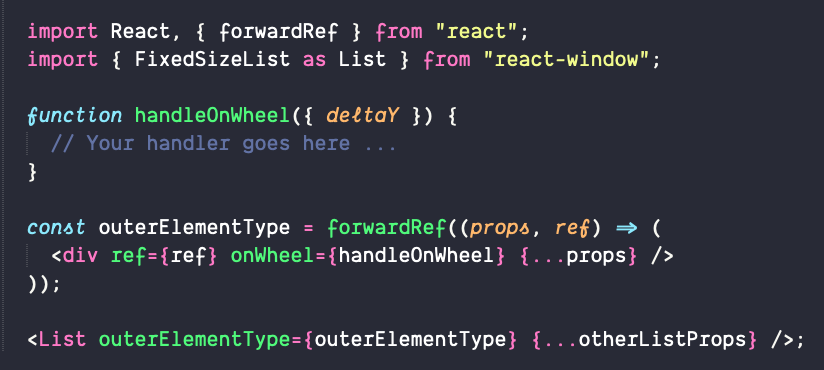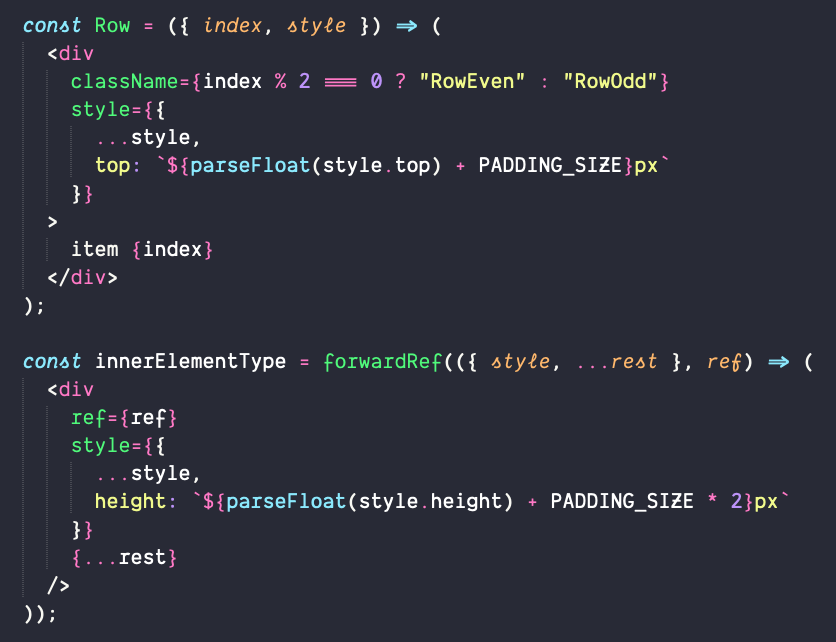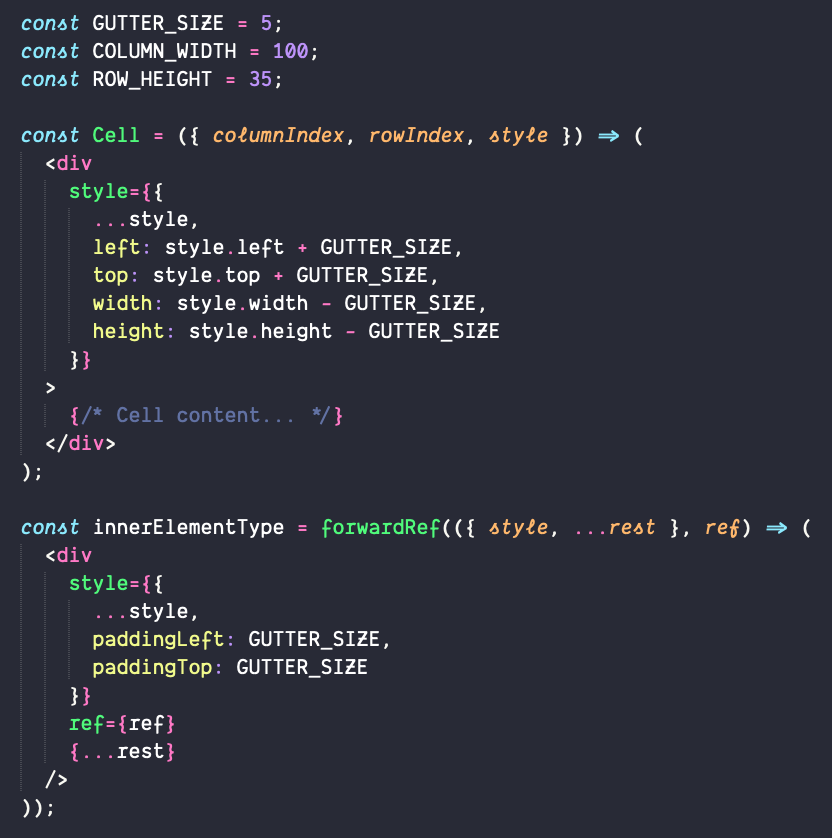React components for efficiently rendering large lists and tabular data
React window works by only rendering part of a large data set (just enough to fill the viewport). This helps address some common performance bottlenecks:
- It reduces the amount of work (and time) required to render the initial view and to process updates.
- It reduces the memory footprint by avoiding over-allocation of DOM nodes.
The following wonderful companies have sponsored react-window:
Learn more about becoming a sponsor!
# Yarn
yarn add react-window
# NPM
npm install --save react-windowLearn more at react-window.now.sh:
react-virtualized-auto-sizer: HOC that grows to fit all of the available space and passes the width and height values to its child.react-window-infinite-loader: Helps break large data sets down into chunks that can be just-in-time loaded as they are scrolled into view. It can also be used to create infinite loading lists (e.g. Facebook or Twitter).react-vtree: Lightweight and flexible solution to render large tree structures (e.g., file system).
I wrote react-virtualized several years ago. At the time, I was new to both React and the concept of windowing. Because of this, I made a few API decisions that I later came to regret. One of these was adding too many non-essential features and components. Once you add something to an open source project, removing it is pretty painful for users.
react-window is a complete rewrite of react-virtualized. I didn't try to solve as many problems or support as many use cases. Instead I focused on making the package smaller1 and faster. I also put a lot of thought into making the API (and documentation) as beginner-friendly as possible (with the caveat that windowing is still kind of an advanced use case).
If react-window provides the functionality your project needs, I would strongly recommend using it instead of react-virtualized. However if you need features that only react-virtualized provides, you have two options:
- Use
react-virtualized. (It's still widely used by a lot of successful projects!) - Create a component that decorates one of the
react-windowprimitives and adds the functionality you need. You may even want to release this component to NPM (as its own, standalone package)! 🙂
1 - Adding a react-virtualized list to a CRA project increases the (gzipped) build size by ~33.5 KB. Adding a react-window list to a CRA project increases the (gzipped) build size by <2 KB.
Yes. I recommend using the react-virtualized-auto-sizer package:
Here's a Code Sandbox demo.
If your list looks something like this...
...then you probably forgot to use the style parameter! Libraries like react-window work by absolutely positioning the list items (via an inline style), so don't forget to attach it to the DOM element you render!
Yes. I recommend using the react-window-infinite-loader package:
Here's a Code Sandbox demo.
Yes, using the outerElementType prop.
Here's a Code Sandbox demo.
Yes, although it requires a bit of inline styling.
Here's a Code Sandbox demo.
Yes, although it requires a bit of inline styling.
Here's a Code Sandbox demo.
Yes, although it requires a small amount of user code. Here's a Code Sandbox demo.
MIT © bvaughn





